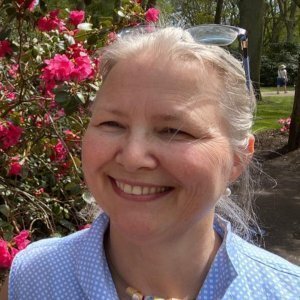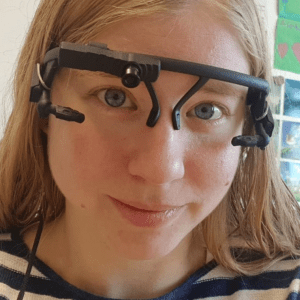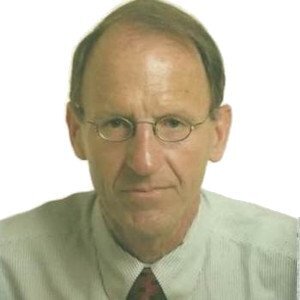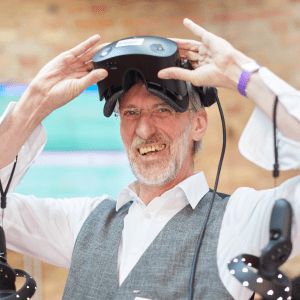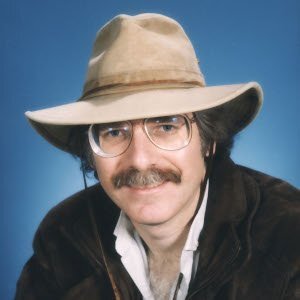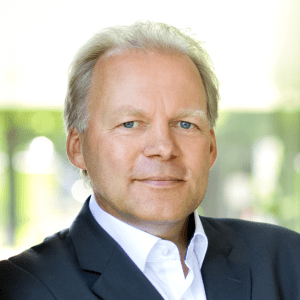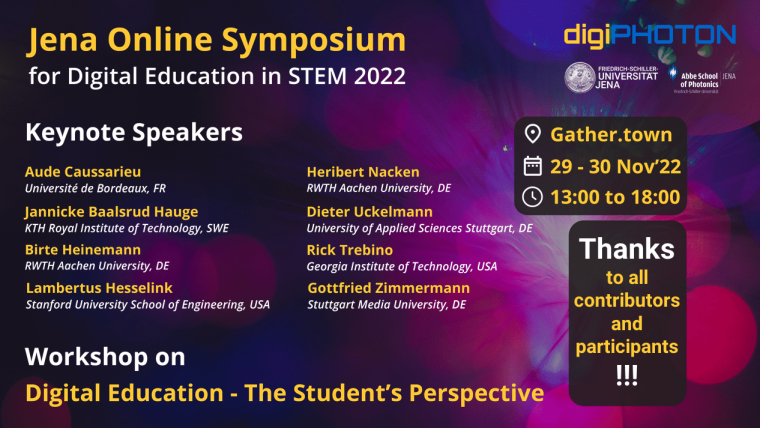
Dr. Aude Caussarieu
- Freelancing Didact, France
-
Abstract - Contribution - A. Caussarieu
While we recognize that virtual laboratories will never replace real physics lab in providing authentic learning experiences, they provide legitimate learning opportunities.
In this presentation, we will provide an overview of the various pedagogical goals that may be achieved through physics practicals. It will allow us to identify those for which virtual reality may be a useful alternative.
We will show how instructional design can be used to enhance the effectiveness of virtual reality in physics teaching by discussing several instructional scenarios.
And we will discuss the first findings that can be obtained from comparisons of students in the immersive photonics lab and in a real optical lab.
Prof. Dr. Jannicke Baalsrud Hauge
- KTH Royal Institute of Technology, Sweden
-
Abstract - Contribution - J. B. Hauge
Experiential work (practical labs, simulations, games) plays a vital role in
engineering education. The rationale is that such ways of learning will
ensure that the students have become acquainted with the right practical
and scientific engineering competencies when leaving university. Labs,
simulations and serious games are costly, age fast, require specific staff,
and are often used with low utilization if used for a single institution. This
talk discusses recent experiences when games, simulation or virtual labs
are used in a virtual setting. It also presents shortages and pitfalls in the
implementation and operations of the transfer process of such tools from
an on-site to an online environment.
M. Sc. Birte Heinemann
- RWTH Aachen University, Germany
-
Abstract - Contribution - B. Heinemann
Learning analytics are tempting - what teacher doesn't wish to gain insights about their learners, improve teaching efficiently and be able to show colorful statistics about learning processes? This keynote will present lessons learned from different projects and provide guidelines and checklists.
This symposium covers online/virtual laboratories, hybrid laboratories, different technologies, and teaching methods. And so this presentation will give an insight into various labs, settings, and projects, for example, a project in which we investigated how to digitize engineering labs and tested different levels of digitization against each other. The question of whether all students will be able to use location-independent labs in the future and optimize their learning process via learning analytics will be examined, and - how do we get meaningful learning data from the labs in the first place?
Not only are laboratories exciting data sources, but different teaching methods, such as serious games and gamification, can give us insight into the learning process and how we motivate and stimulate learners with this variety of teaching styles. Moreover, using technologies such as virtual reality almost demands that we collect and evaluate the learning data. This talk will address what we do with all the data and how we get from data to information.
Prof. Dr. Lambertus Hesselink
- Stanford University School of Engineering, California, USA
-
Abstract - Contribution - L. Hesselink
- coming soon -
Prof. Dr. Heribert Nacken
- RWTH Aachen University, Germany
-
Abstract - Contribution - H. Nacken
The open source software MyScore for avatar-based teaching and learning aims to give students and lecturers the possibility to collaborate and interact with each other in 3D VR scenarios, independent of their real location. Students and lecturers are represented by avatars and can communicate with each other in the various VR scenarios, with a 360-degree neuro and audio function guaranteeing a realistic perception. Collaboration among participants is enabled in the VR scenarios through browser-based functionalities; everything they can accomplish in the real world via web browser is also available to them in VR. In addition, there are separate VR scenarios in which haptic processes, such as the use of laboratory experiments or, for example, the construction of mobile flood protection walls, can also be realized. The existing 3D scenarios range from simple conference rooms for communication to role-play scenarios for the development of communication skills and virtualized laboratory rooms. They are available to users as Open Educational Resources for immediate application. The software was developed as an open source solution within the framework of the DAAD project MyScore at RWTH Aachen University; all scenarios are provided as Open Educational Resources in the sense of UNESCO under a CC BY 4.0 license. The software was developed from scratch, tested and is now part of the curriculum of two courses at RWTH Aachen University.
It is planned to give the talk directly in a MyScore scenario. Participants can participate directly either via VR headset (immersive version) or with a Windows PC solution (non-immersive version). Information can be found at the end of the project homepage
https://vredu.lfi.rwth-aachen.de/External link.
Prof. Dr. Rick Trebino
- Georgia Institute of Technology, Atlanta, USA
-
Abstract - Contribution - R. Trebino
The class lecture hasn’t changed in 5000 years, continuing to comprise a pitifully dull talking head blathering before a bleak wall with chalk in hand. Having completely sat out the ongoing spectacular technological revolution, it remains, not only limited by inadequate teacher knowledge, but also by his poor oratorical skills. Even at its best, the talking head is generally considered the universal symbol of boredom. Worse, presenting a lecture is exhausting. Worse still, lecture preparation is extremely time-consuming, and lecture notes are not amenable to being shared. So, as with books before Gutenberg, the task of preparing lectures must currently be performed independently, and hence massively redundantly, by every teacher in the world. Lecture preparation absorbs tens of billions of human-hours and over a trillion euros annually.
So, it’s time to re-invent the class lecture. If lectures were actually exciting, students would pay attention, not because they fear low grades, but because they’d want to. Alas, a talking head cannot effectively convey this excitement. Teenagers easily remember minute details of popular movies seen years earlier but often can’t recall key ideas from math class the previous day.
As a result, I’ve created visually exciting, elegant, high-tech multimedia Power Point lectures, packed with colorful gifs, animations, images, and diagrams. Then, during the pandemic, I carefully wrote entertaining scripts for them and narrated and meticulously audio-edited them, yielding near-professional videos of entire Modern Physics and Optics courses.2
While still works-in-progress, they’re already vastly superior to live lectures. As downloadable movies, they can be watched anytime and many times, greatly reducing student anxiety. Also, they can easily be shared with the world (which I am already doing2), solving the redundant-effort problem.
They also immediately solve one pesky problem: the ubiquitous exponential decay of college class attendance over the semester. In my Optics course, for example, because they could do so anytime, all the students reported watching 100% of the lectures. Also, grades were spectacular, mostly A’s for the first time in a course of mine.
Now, of course, we can’t expect teachers to have all the skills or time to create such lectures, especially an entire course of them. But we don’t need to. We only need one. Or, better, one team of teachers.
Perhaps the Gates or similar foundation would provide grants of, say, $200,000 per team per course. Creation of, for example, 50 high-school and 200 college courses, each at two different levels, would cost $100M, a fraction of the ~$1B spent reducing class size in a previous failed attempt to improve student performance.
Implementation of this approach would do for lectures what Gutenberg did for books. Of course, for lectures, we already have the mass-dissemination method (the internet); what we lack is lectures worth mass-disseminating.
The result would be a free permanent resource for the entire world. With it, teachers could then spend their newly available time themselves learning and working more directly with the students. Or they could simply work shorter, less exhausting days at a higher hourly wage.
As the entire world acquires internet access, such lectures could bring quality education to even the poorest schools worldwide. Indeed, Power Point can sub-title narrated lectures into 60 languages. Finally, in countries hostile to the education of girls, girls could self-educate by privately watching such lectures.
In conclusion, I believe this transformation is long overdue, and the resulting better-educated world will enjoy benefits currently unimagined.
- Text and figures reprinted with permission from R. Trebino, Re-Inventing the Lecture, in The SPIE Field Guide to Optics Education, 2022.
- https://frog.gatech.edu/talks.html
Prof. Dr. Dieter Uckelmann
- Hochschule für Technik Stuttgart, Germany
-
Abstract - Contribution - D. Uckelmann
The Internet of Things (IoT) bridges the virtual and real world. While the first focus of the IoT was mainly related to logistics and retail, we see a broader usage today in additional domains such as Smart Cities and Buildings, Smart Manufacturing, Smart Energy and Smart Education. The demand for highly skilled employees is growing and universities are expected to provide the necessary skills. While computer science education is providing the information technology skills, IoT skills require additional knowledge and experience related to sensors, actuators and domain-specific real world scenarios, such as provided in educational labs, which are typically used in physics, electronics, production engineering or logistics. However, quite a view of traditional real labs can be transformed into remote labs or substituted by virtual labs. The gaps between real labs and online labs are diminishing – just as the gaps between the real and virtual world in the IoT.
This key-note discusses firstly, how online-labs can enhance education on IoT-content and secondly, how IoT-technologies can be used for making labs remotely accessible to the students. The combination of both aspects leads to synergies and allows to integrate IoT-students into the IoT-lab development and corresponding research. Typical competencies required for the IoT address automatic identification, sensors, actuators, middleware, data visualisation, data analysis, data distribution and domain-specific knowledge – and most of these can be taught in lab-based scenarios. The work is based on the BMBF-funded project “Open Digital Lab for You” (DigiLab4U), which ended in July 2022, and further research related to the IoT. In DigiLab4U real laboratories were digitised and linked with virtual environments and serious games. DigiLab4U provides location-independent access to a digitised and networked learning and research environment. The technical, organizational and didactical concepts, benefits and hurdles of online-labs for IoT-education in DigiLab4U will be discussed.
Prof. Dr. Gottfried Zimmermann
- Hochschule der Medien Stuttgart, Germany
-
Abstract - Contribution - G. Zimmermann
Digital Teaching imposes challenges for an inclusive teaching approach in Higher Education. In this presentation, we will talk about general aspects and our experiences in virtual/remote labs, digitally enhanced teaching and online learning. This includes thoughts about immersive environments (AR/VR) in learning contexts, and future perspectives.
